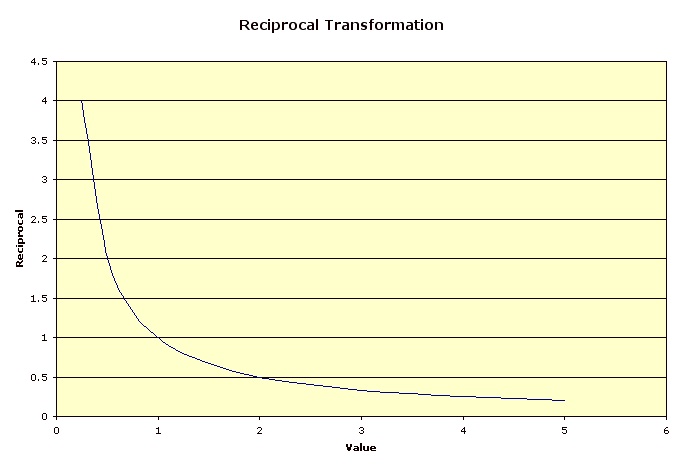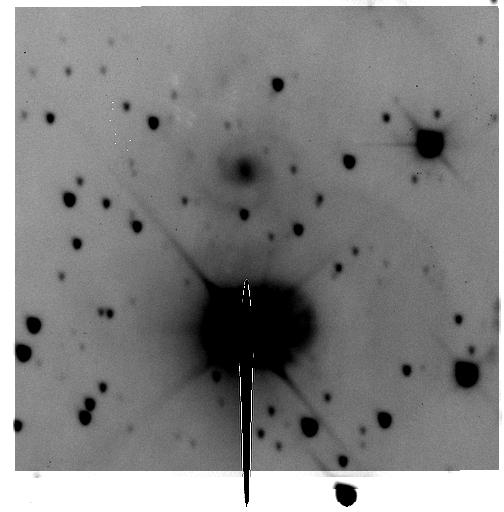


Simply put, this is a graph of the function f(x) = 1/x. Applied to an image (x = counts), this would have the effect of considerably brightening dark pixels and darkening bright pixels. The brighter the pixel, the darker the transformation function makes it and vice versa.
________________________________________
For low pixel counts, this function would create drastic differences in transformed counts, which would create a larger contrast between the pixels. For brighter pixels, the function becomes more and more horizontal, and wouldn't create anywhere near as much contrast, in fact, it would blacken them out, leaving the lower counts as the brighter. This function would benefit an image with a lot of detail in a narrow range of values in the darker end of the spectrum of pixel values, where the slope of a tangent line would be steeper. In the case of a galaxy, it should be a bit brighter than the surrounding sky in order to stand out. For that kind of image this transformation would create a greater contrast between the galaxy and the surrounding sky and make the detail stand out more.
________________________________________
| Reciprocal Image |
 |
| North up, East left Linear scaling min/max -- 4553.9/5999.4 |
Applying the reciprocal function brings out more detail in the galaxy than simply inverting the image. The spiral arms are no longer just a suggestion of such, but since the the galaxy isn't much brighter than the surrounding sky, and is sort of being washed out by the bright star to the south, this function may not be the best one to use for bringing out detail. This function would only be useful for looking at the structure of the galaxy, as you wouldn't be able to perform measurements on the transformed image.